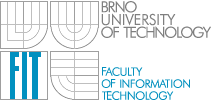|
|
Keynote Speakers
Modeling the Electricity Markets in Central Europe
|
|
Dr. Martin Hruby |
Abstract
The talk is going to present three computer models of trading with electricity commodities in the Czech and central-European markets. The models are frequently used to make professional forecasts of the electricity markets for various government and commercial customers. The described models combine the classical simulation techniques with mathematical background of Game theory, especially the theory of non-cooperative games and the auction theory. The research and development on these models has been done in cooperation of the Brno University of Technology and EGU Brno, plc. - the leading Czech company in power engineering analysis and forecasting.
Curriculum Vitae
M. Hruby received his Ph.D. in Computer science in 2004 at Brno University of Technology. After his doctorate, he joined EGU Brno, plc. in research and development of modeling the market strategic decisions in the format of computer models. He developed various techniques of computer modeling of multi-criteria strategic decisions based on classical and algorithmic game theory, techniques of reducing the space of strategy profiles in games and algorithms of computing the game equilibrium. Apart from the game theoretical modeling, he is specialized also in computer optimizations of manufacture processes. Currently, dr. M. Hruby works at FIT BUT and gives his lectures in Computer Modeling, Game Theory and Geographic Information Systems.
Mathematical modeling, simulation, and rational design of nanowire
sensors
|
|
Dr Clemens Heitzinger |
Abstract
In recent years, nanowire sensors for the detection of biomolecules and gas species have been demonstrated experimentally. The nanowire transducers consist of materials such as silicon, SnO2, or CuO. As bio- or gas molecules bind or react at the nanowire surface, the charge concentration changes and the resistance of the nanowire is modulated.
We have developed partial-differential-equations models for the quantitative understanding of nanowire bio- and gas sensors as well as models for the charge concentration in the crucial boundary layers. Homogenization of the boundary layer leads to interface conditions and we have shown existence and (local) uniqueness for the resulting self-consistent model for bio- and gas sensors. We have also developed a new parallel algorithm based on the FETI method for the numerical solution of the drift-diffusion-Poisson system including interface conditions. It is especially advantageous for structures with high aspect ratios such as nanowire sensors and transistors and/or for structures consisting of different materials (equations).
In both bio- and gas sensors, several random effects occur due to Brownian motion, binding and unbinding of molecules, chemical reactions, and noise in the nanowire. In this line of work, these effects are being quantified as well in order to improve the signal-to-noise ratio.
The purpose of the modeling and simulation effort is of course to provide the quantitative understanding of this new technology and the tools for its rational design. Therefore numerical results are presented and compared with measurements. For example, we have performed simulations of realistic nanowire DNA sensors and we have identified the optimal operating regime (maximum sensor response) by optimizing device parameters. Different surface models are used for gas sensors and results from their simulation are presented as well.
Finally, open questions in this field, both regarding sensor development and simulation, are discussed.
Curriculum Vitae
Clemens Heitzinger received the doctorate degree in technical sciences with honors from TU Vienna in December 2002 and the habilitation in applied mathematics from TU Vienna in April 2010. He is currently working as a senior research associate at the Department of Applied Mathematics and Theoretical Physics (DAMTP) at the University of Cambridge, UK, while being on leave from his position as Univ.-Ass. at the University of Vienna. His scientific interests include mathematical modeling and simulation for topics in nanotechnology and especially of nanowire bio- and gas sensors. He has published about
30 articles in international journals and about 40 papers in refereed conference proceedings, and he has given about 15 invited presentations.



 Email:
Email:  Tel: +44 (1223) 760 445
Tel: +44 (1223) 760 445







